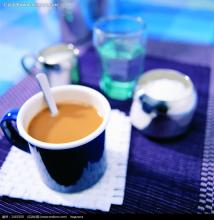Introduction of Santa Barara in the coffee flavor producing area of Honduras
Honduran coffee is imported from El Salvador. Coffee production was initially in a state of inexorable heat until the Brazilian frost of 1975. Brazil was hit hard, coffee production plummeted, while Honduras took advantage of the opportunity to "rise", coffee production soared from 500,000 bags to 1.8 million bags, and was robbed. Coffee production in Honduras really took off after that. Honduras is now the second largest coffee exporter in Central America (after Guatemala), mainly to the United States and Germany.
What is there to miss about coffee in this turbulent country? Honduran coffee does not have very distinctive characteristics. The overall flavor is rich and extremely balanced, which is its biggest feature.
Medium or light acidity, giving a distinct but not intense sensation. Sometimes with a nice floral or fruity aroma (generally different regions, different altitudes of beans have different performance). It is not at all reminiscent of the turmoil in this country. Bitterness and pronounced sweetness. Honduran coffee taste overall balanced, acid and bitterness are not so strong, the balance between the two is very good.
Honduran coffee's extremely balanced character makes it versatile. It can be used to blend coffee or brewed as a single product, and the Italian espresso blended with Honduran coffee can have amazing results. Although in troubled times, coffee can also grow its own wonderful, it is not difficult to understand why so many people are so obsessed with this black liquid, to some extent this is not a simple love or habit, coffee is a mood or rely on it. I hope this country will soon show the vitality and splendor of coffee. Turbulent Honduras has a future as exciting as Honduran coffee.

Important Notice :
前街咖啡 FrontStreet Coffee has moved to new addredd:
FrontStreet Coffee Address: 315,Donghua East Road,GuangZhou
Tel:020 38364473
- Prev

Guatemalan Coffee Flavor producing area Ekatran Valley
1. Acatenango Valley: the Acatenango Valley is 2000 meters (6500 feet) above sea level, with dense shade and unique ecology. Nearby Fuego volcanoes continue to erupt, making its coarse, sandy soil rich in a variety of minerals. Temperate sea breezes from the Pacific and a seasonal climate make this production.
- Next

An introduction to the characteristics and Origin of Jamaican Blue Mountain Coffee
Only coffee grown in the Blue Mountain area above 1800 meters above sea level can be called Blue Mountain Coffee. A coffee enthusiast whom the reporter knows in the United States is even more demanding, insisting that the coffee grown at an altitude of 2256 meters is Blue Mountain coffee. Coffee beans grown in the lower mountains of the island of Jamaica can only be named Jamaican alpine coffee because of their different qualities. In addition
Related
- Does Rose Summer choose Blue, Green or Red? Detailed explanation of Rose Summer Coffee plots and Classification in Panamanian Jade Manor
- What is the difference between the origin, producing area, processing plant, cooperative and manor of coffee beans?
- How fine does the espresso powder fit? how to grind the espresso?
- Sca coffee roasting degree color card coffee roasting degree 8 roasting color values what do you mean?
- The practice of lattes: how to make lattes at home
- Introduction to Indonesian Fine Coffee beans-- Java Coffee producing area of Indonesian Arabica Coffee
- How much will the flavor of light and medium roasted rose summer be expressed? What baking level is rose summer suitable for?
- Introduction to the characteristics of washing, sun-drying or wet-planing coffee commonly used in Mantenin, Indonesia
- Price characteristics of Arabica Coffee Bean Starbucks introduction to Manning Coffee Bean Taste producing area Variety Manor
- What is the authentic Yega flavor? What are the flavor characteristics of the really excellent Yejasuffi coffee beans?

